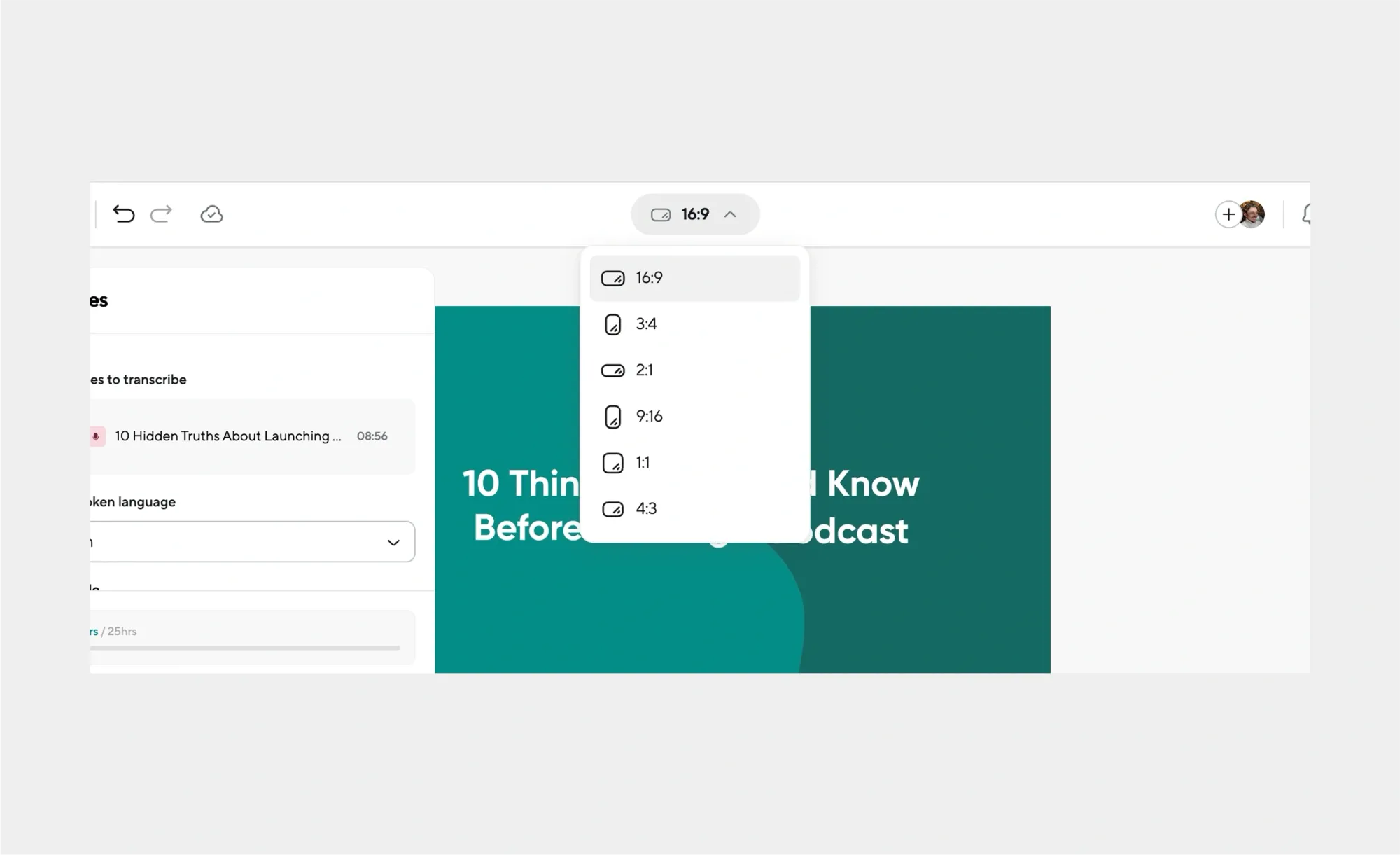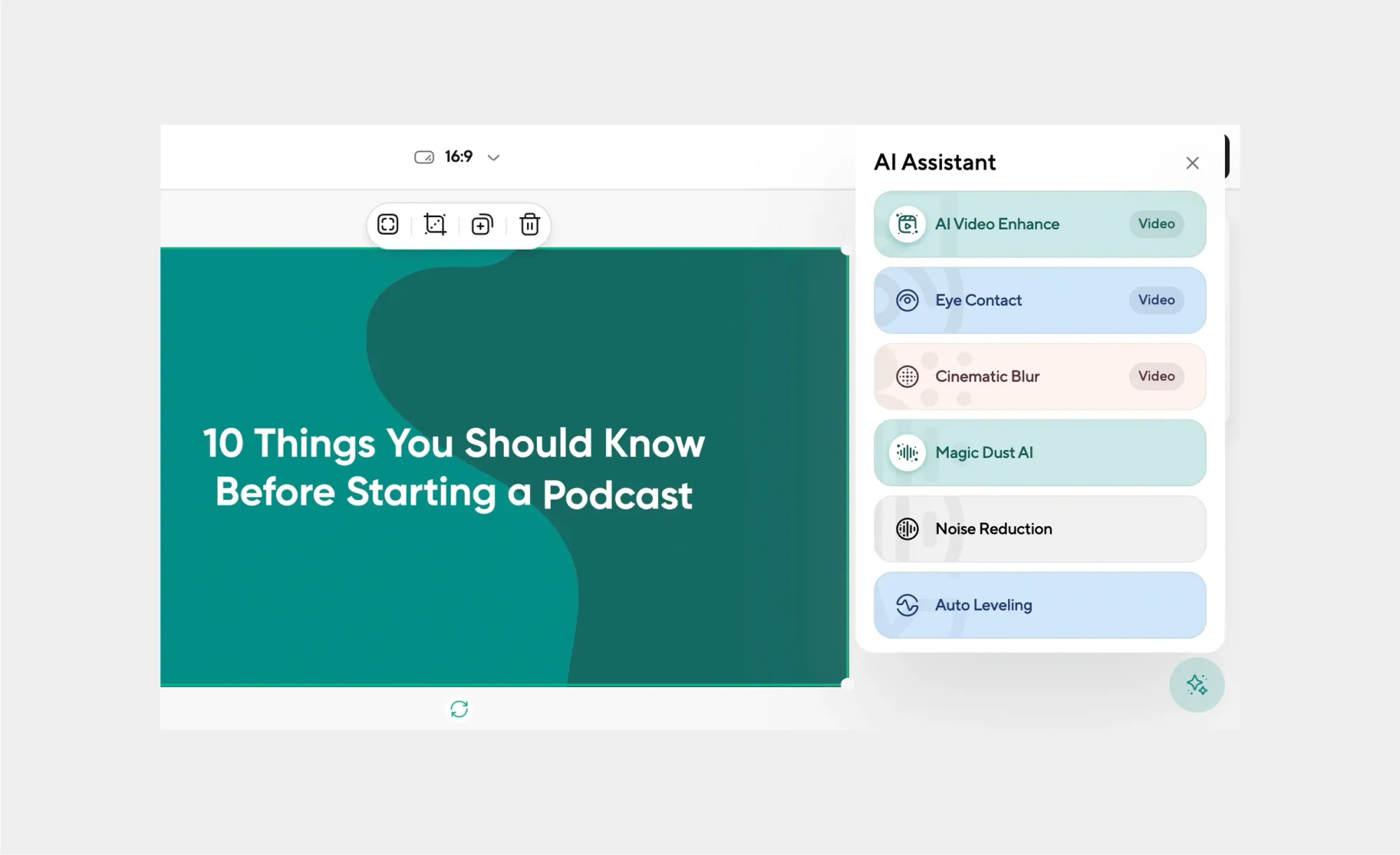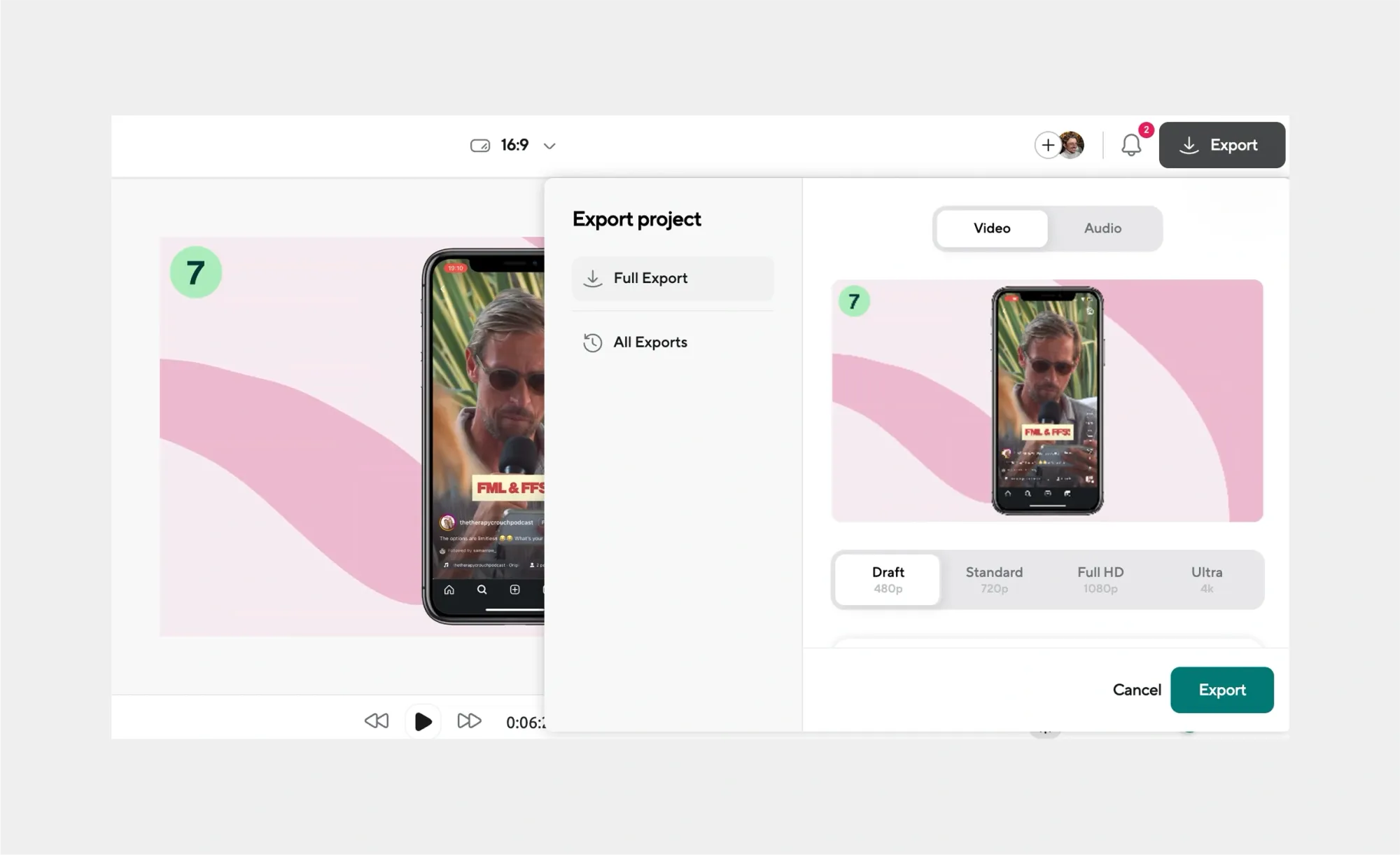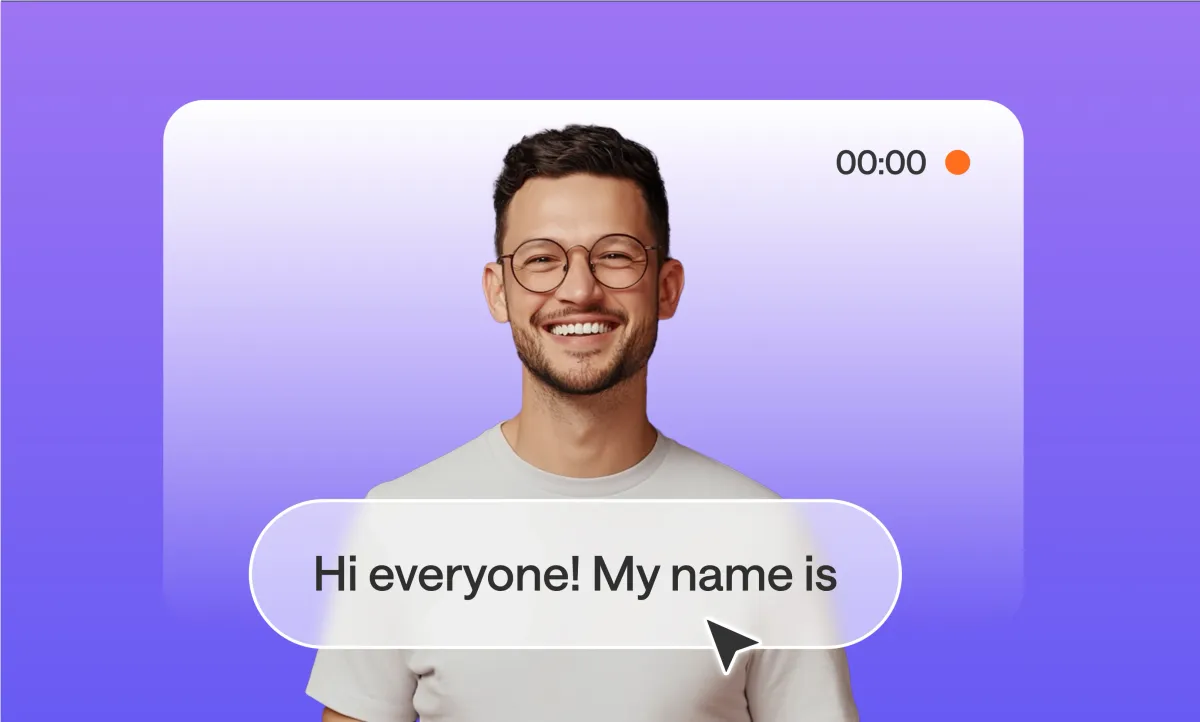If your training videos are your team’s least favorite part of the day or just another ignored manual, it’s time to rethink your strategy. Making videos that actually teach and hold attention is easier than you think.
Let’s explore how to create training videos that work and don’t put your coworkers to sleep.
Types of training videos
Here are four common types of training videos that businesses and educators use:
1. Tutorial videos
Tutorial videos are step-by-step guides designed to teach a specific skill or process. These videos break down complex tasks into manageable parts, making it easier for viewers to follow along and learn at their own pace. For example, a software company might create tutorial videos showing users how to navigate their app or perform key functions. Clear visuals, screen recordings, and voiceover explanations are often combined to make these videos effective and easy to understand.
2. Onboarding videos
Onboarding videos introduce new employees to your company culture, policies, and workflows. They’re an essential part of making new hires feel welcome and informed from day one. These videos typically cover company history, mission statements, key team members, and expectations. Well-crafted onboarding videos save time in training, provide consistency across teams, and create a positive first impression that can improve employee retention.
3. Safety training videos
Safety training videos focus on workplace safety protocols and compliance regulations. Whether it’s handling machinery, emergency procedures, or proper ergonomics, these videos aim to keep employees safe and reduce workplace accidents. These videos often include demonstrations, real-life scenarios, and quizzes to reinforce learning. Making safety training engaging and clear is crucial, since it directly impacts employee well-being and legal compliance.
4. Soft skills training videos
Soft skills training videos develop interpersonal skills such as communication, leadership, teamwork, and problem-solving. These videos often use role-playing, storytelling, and real-life examples to teach concepts that are harder to demonstrate through text or traditional lectures. Soft skills are vital for building strong teams and a positive work environment, so engaging and relatable videos can have a big impact.
How to create a training video with Podcastle
Creating training videos is easier than you might think, especially with Podcastle’s all‑in‑one platform that streamlines recording, editing, and exporting. Here’s your step‑by‑step guide:
1. Record your video
Start by opening Podcastle’s online editor and choose to record either yourself, your screen, or both simultaneously. The tool gives you HD quality, making it great for tutorials, presentations, and more. You can record directly in your browser, no software downloads needed!
2. Trim and arrange clips

Once recorded, it’s time to move it into the intuitive timeline editor. Here you can cut, split, resize, and merge clips effortlessly. Podcastle makes it simple with drag‑and‑drop controls and snap-to guidance that keeps each edit clean and precise.
3. Enhance with AI tools

Polish your video using Podcastle’s AI features. Remove background noise, enhance visuals, and fix audio clarity with automatic tools powered by AI. You can also easily change the aspect ratio of your training video if you need to repurpose it for your social media accounts.
4. Add text, annotations and subtitles
Reinforce key points with on-screen text, captions, or callouts. Podcastle offers automated subtitle generation through accurate transcription, which can be styled for readability. You can also annotate or highlight parts of the screen to guide learners smoothly.
5. Export in the right format

When your video is ready, choose your export settings. Podcastle supports high-quality formats suitable for training platforms, websites, and social media. Once exported, your polished training video is ready to be shared on any platform.
Training video production tips
Creating effective training videos takes more than just pressing record. To keep your audience engaged and help them learn better, keep these essential production tips in mind:
- Plan your content thoroughly: Outline your key points and structure your video logically before filming. A clear plan keeps your message focused and easy to follow.
- Keep it concise: Aim for videos between 3 and 7 minutes long. Break longer topics into smaller, digestible segments to maintain engagement.
- Use clear and simple language: Avoid jargon or complicated terms. Speak plainly and clearly to make your content accessible to learners of all levels.
- Incorporate visuals and text: Add diagrams, screenshots, or on-screen text highlights to reinforce key points and cater to different learning styles.
- Invest in good audio quality: Use a quality microphone and minimize background noise to ensure your message comes across clearly.
- Add captions or subtitles: Captions increase accessibility for hearing-impaired viewers and those watching in noisy environments.
- Include interactive elements: Use quizzes, prompts, or calls to action to encourage active engagement and better information retention.
- Test and get feedback: Share your video with a small group before release. Use their feedback to improve and clarify your content.
Benefits of training videos
People forget slides and skim manuals. But a good training video? It sticks. And it saves you time every single time it plays. Here are some of the main benefits of training videos:
1. Scalable and cost-effective
Once you've created a training video, you can use it again and again without needing to repeat the session or book a trainer. That means you save time, money, and human resources. Whether you're a small business or a global enterprise, videos allow you to reach hundreds or even thousands of people with a single piece of content.
2. Easy to access and revisit
People learn at different paces, and not everyone will absorb the information in one go. With training videos, learners can pause, rewind, and rewatch whenever they need to. Whether it’s a detailed walkthrough or a quick refresher, on-demand access helps boost retention and reduce confusion.
3. More engaging than manuals
Let’s be honest. Most people don’t enjoy flipping through dense PDFs or dry onboarding decks. Videos offer a more dynamic way to deliver content. You can use voiceover, music, animation, screen recording, and real people to keep things interesting. That mix of visual and audio stimulation helps hold attention and improves understanding.
4. Consistent messaging
When training is delivered live, even the best presenters can vary in how they explain things. With a video, you know the messaging is the same every time someone watches. That’s crucial for things like compliance training or safety protocols, where accuracy matters.
5. Supports remote and hybrid teams
In a distributed workplace, it's not always possible to bring everyone into the same room. Training videos bridge that gap. Whether your team is remote, hybrid, or spread across time zones, you can deliver the same content without needing to coordinate schedules or time slots.
6. Encourages self-paced learning
Training videos give learners control over how they engage with the content. Some might speed through basic topics, while others take their time reviewing complex steps. This kind of flexibility leads to better learning outcomes and a more empowering experience overall.
7. Boosts retention and performance
Visual and auditory learning combined with repetition make information easier to remember. Studies have shown that video-based training can improve retention compared to text-based materials alone. When people understand the material, they’re more confident and productive in their roles.
Final thoughts
Creating effective training videos doesn’t have to be overwhelming. With the right approach and tools like Podcastle, you can turn dry, complicated material into clear, engaging content that people actually remember. Use training videos to onboard new employees, teach software skills, or build soft skills across your team, all while offering a scalable, consistent, and engaging way to share knowledge.
Ready to get started? Try Podcastle today and create training videos that truly make an impact.
FAQs
How do I make training videos more engaging?
Keep them concise, use visuals and storytelling, add captions, and include interactive elements like quizzes or prompts to maintain attention.
How can I create training videos using AI?
AI tools such as Podcastle help automate editing, add subtitles, clean up audio, and even enhance visuals, making the process faster and more professional.
What’s the best platform for making employee training videos?
Podcastle is an all-in-one platform that allows you to record, edit, and export high-quality training videos with ease. Other options include tools like Camtasia, Loom, or Vimeo, depending on your needs.
What are the best AI tools for translating corporate training videos?
Platforms like Podcastle, Descript, and VEED provide AI-powered transcription and translation features, allowing you to make your training videos accessible to a global audience.








